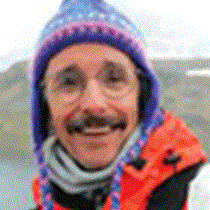Drake Passage
Another benevolent day in the Great Southern Ocean. If the waves aren’t washing the upper deck windows (they are not), then we have no complaints. An open fetch and deep water swell greets us as we bite our way into it. We are northbound, headed for Cape Horn, Ushuaia, the chocolate and chatter of Argentina, and beyond that, home, filled with fine memories of Antarctica. A few whitecaps kick up, and every so often a rodeo wave tries to twist us off our feet. But we’re old salts by now, on this our tenth day at sea. It’ll take more than what we’re getting to knock us down.
National Geographic Endeavour is a university at sea, with five lectures in one day: global warming, undersea Antarctica, the seals of southern ocean, the ozone (the “hole story”), and the tragic but instructive tale of the 1911-12 race to the South Pole between the Englishman Robert Falcon Scott and the Norwegian Roald Amundsen. We manage to catch a nap, cruise about our laptop computers to review our digital images of icebergs and penguins (was I really there?), and visit with new friends. Pintado petrels wing by, and every so often an albatross and prion banks off the gentle wind.
We begin and end every meal by walking past a marvelous, glass-encased model of the Endeavour for which our ship is named, the boat sailed by Captain James Cook in his first great voyage of discovery, 1768-1771. It was the dawn of the age of enlightenment then, when men embraced science, discovery and learning with new vigor. Yet they still believed in mermaids and unicorns. What we learn and what we believe in rides with us too. Matters of fact, matters of faith. We follow in the spirit of James Cook, exploring distant icy lands and going places that friends and family will never understand. What to say when they ask, why? Why Antarctica? Perhaps this: We travel the road of mystery to gain knowledge, but also to deepen the mystery.
Another benevolent day in the Great Southern Ocean. If the waves aren’t washing the upper deck windows (they are not), then we have no complaints. An open fetch and deep water swell greets us as we bite our way into it. We are northbound, headed for Cape Horn, Ushuaia, the chocolate and chatter of Argentina, and beyond that, home, filled with fine memories of Antarctica. A few whitecaps kick up, and every so often a rodeo wave tries to twist us off our feet. But we’re old salts by now, on this our tenth day at sea. It’ll take more than what we’re getting to knock us down.
National Geographic Endeavour is a university at sea, with five lectures in one day: global warming, undersea Antarctica, the seals of southern ocean, the ozone (the “hole story”), and the tragic but instructive tale of the 1911-12 race to the South Pole between the Englishman Robert Falcon Scott and the Norwegian Roald Amundsen. We manage to catch a nap, cruise about our laptop computers to review our digital images of icebergs and penguins (was I really there?), and visit with new friends. Pintado petrels wing by, and every so often an albatross and prion banks off the gentle wind.
We begin and end every meal by walking past a marvelous, glass-encased model of the Endeavour for which our ship is named, the boat sailed by Captain James Cook in his first great voyage of discovery, 1768-1771. It was the dawn of the age of enlightenment then, when men embraced science, discovery and learning with new vigor. Yet they still believed in mermaids and unicorns. What we learn and what we believe in rides with us too. Matters of fact, matters of faith. We follow in the spirit of James Cook, exploring distant icy lands and going places that friends and family will never understand. What to say when they ask, why? Why Antarctica? Perhaps this: We travel the road of mystery to gain knowledge, but also to deepen the mystery.




